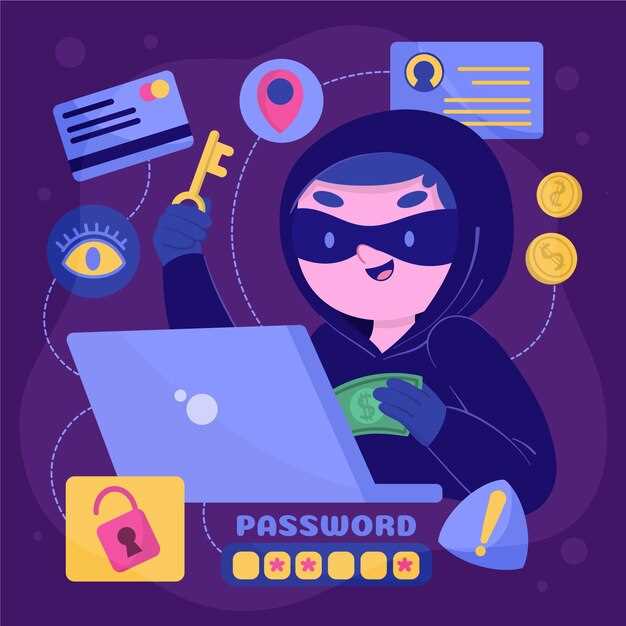In the rapidly evolving realm of digital collectibles, ensuring the safety of virtual items has become paramount. Many enthusiasts are diving into this new frontier, exploring its endless possibilities. Yet, with opportunity comes risk. Understanding how to maintain the integrity of these unique assets is crucial.
Threats can arise from numerous sources. Whether it’s phishing attacks or simple oversight, vigilance is necessary. Even the most tech-savvy individuals can fall prey to these dangers. This reality makes it essential to cultivate a robust defense.
Amidst this landscape, one must remain proactive. The temptation to overlook certain details can lead to significant loss. Taking time to familiarize oneself with the tools and techniques of safeguarding these invaluable items can make a marked difference. Ultimately, embracing a comprehensive approach is vital for long-term success.
In this discussion, we’ll explore various methodologies designed to enhance the well-being of virtual collections. Each recommendation will delve into practical steps that everyone can implement. From utilizing advanced encryption to practicing holistic digital hygiene, knowledge is a powerful ally. Prepare to embark on a journey towards heightened vigilance in the ownership of these remarkable tokens.
Protect Your NFTs: Security Best Practices

In an evolving digital landscape, safeguarding valuable collectibles is crucial. Many individuals overlook the vulnerabilities associated with ownership. However, taking proactive steps ensures that these treasures remain secure. The balance between accessibility and safety is vital. Awareness is the first step toward effective safeguarding.
- Use strong and unique passwords for accounts.
- Enable two-factor authentication wherever possible.
- Regularly update software and wallets to the latest versions.
- Be cautious of phishing attacks and suspicious links.
- Store assets in secure, offline wallets when not in use.
By implementing these measures, individuals create robust barriers against potential threats, vastly decreasing the likelihood of unauthorized access and ensuring that personal investments remain intact.
- Always back up important information and wallet keys.
- Research the platforms thoroughly before engaging.
- Be mindful of community interactions and avoid sharing sensitive details.
Investing time in understanding these recommendations goes a long way, fostering a secure environment where creativity and innovation can flourish without the looming anxiety of digital loss.
Understanding NFT Security Risks

The world of digital collectibles is exciting yet fraught with challenges. As these unique tokens gain popularity, so do the threats targeting them. Issues may arise from cybercriminals, untrustworthy platforms, and even careless management of private keys. Awareness of these vulnerabilities is crucial.
Many people underestimate the importance of safeguarding their virtual possessions. Compromised wallets can lead to irreversible losses. Moreover, phishing scams continue to evolve, tricking even the most cautious individuals. In some cases, users are misled into revealing sensitive information.
While the technology itself offers some degree of security, user behavior plays a significant role in overall risk. With millions of dollars involved in trades, the stakes are high. Maintaining vigilance during transactions and interactions can help mitigate potential threats for collectors.
Additionally, poorly designed platforms may expose users to risks they overlook. Non-fungible tokens are stored on the blockchain, yet access management often depends on individual account security practices. A single weak link can result in devastating outcomes, emphasizing the need for continuous education about digital safety.
Common Threats to Digital Collectibles
As the popularity of virtual assets continues to soar, risks associated with their ownership also grow. While these items can provide significant enjoyment and potential value, they are not without vulnerabilities. Cybercriminals and malicious activities target collectors, seeking to exploit any weaknesses. Understanding these threats is crucial for maintaining the value and integrity of these prized possessions.
One prevalent danger is phishing attacks. Individuals receive fraudulent messages that appear legitimate, aiming to harvest sensitive information. Also, there are hacking incidents specifically targeting online wallets, where many collectors store their treasures. Inadequate password management further complicates matters. A weak passphrase can easily be compromised, allowing unauthorized access.
Furthermore, rug pulls, a term coined in the crypto space, expose users to scams whereby developers abandon a project after attracting investor funds. Such occurrences can lead to significant losses for collectors, leaving them with worthless tokens. It is imperative to stay informed about the evolving landscape of threats.
| Threat Type | Description | Impact |
|---|---|---|
| Phishing | Fraudulent attempts to gain personal information through deceptive messages. | Loss of access to wallets or personal data. |
| Hacking | Unauthorized access to wallets or accounts, often through weak passwords. | Potential theft of valuable digital items. |
| Rug Pulls | Scams where projects vanish after collecting user investments. | Complete loss of investment and accumulating digital items. |
Collectors must remain vigilant in this fast-paced environment. Awareness and proactive measures can mitigate risks associated with digital ownership. A knowledgeable community can help foster a safer marketplace. In essence, recognizing these common threats is the first step toward ensuring safer interactions within the digital collectible sphere.
Types of NFT Scams to Watch For
The digital landscape is evolving rapidly, and with it, new threats emerge. As interest in non-fungible tokens grows, so does the opportunity for deception. It’s crucial to be aware of the various scams that can target unsuspecting enthusiasts. Not every flashy project is legitimate, and sometimes appearances can be misleading. Vigilance is essential in this ever-changing environment.
Here are several common scams you should keep an eye on:
- Phishing Attacks: Scammers often replicate well-known platforms to steal sensitive information.
- Fake Marketplaces: Some websites mimic genuine marketplaces, tricking users into making fraudulent purchases.
- Rug Pulls: Developers may launch a project, then abandon it, disappearing with investors’ funds.
- Counterfeit NFTs: Fraudulent copies of popular tokens can mislead buyers into spending their assets.
When considering a new collection or project, it’s vital to conduct thorough research, verify official channels, and engage with community feedback, as these steps can serve as a solid foundation for avoiding many prevalent strategies employed by con artists in the space.
- Always check the authenticity of the creator.
- Be cautious of offers that seem too good to be true.
- Monitor social media channels for any warning signs.
Staying informed and critically assessing opportunities will greatly enhance your chances of navigating the NFT realm safely. Always trust your instincts and double-check before making any commitments.
Identifying Phishing Attacks
Recognizing deceitful attempts to acquire sensitive information is crucial in today’s digital landscape. With the rise of online transactions, scams have become increasingly sophisticated. They often disguise themselves as legitimate requests. Users face continual threats to their valuable possessions. Being vigilant can prevent significant losses.
Phishing scams can appear in various forms. Commonly, they manifest as emails, messages, or even fake websites. These deceptive communications often use familiar branding to create a false sense of security. They may urge recipients to click on links or provide personal details. It’s essential to be cautious and skeptical.
Here are some key indicators to look out for:
| Indicator | Description |
|---|---|
| Unusual URLs | Check for misspellings or unfamiliar domains in links. |
| Urgency or Threats | Messages that pressure you to act quickly often signal danger. |
| Poor Grammar and Spelling | Many phishing attempts are rife with errors that reveal their intent. |
| Requests for Personal Information | Legitimate companies rarely ask for sensitive data through unsecured channels. |
| Unverified Senders | Examine the sender’s address carefully; it may not be what it seems. |
Understanding these signs is essential in maintaining a safe online environment. Activating multi-factor authentication can add an extra layer of resilience against these threats. Always verify before sharing any information. By raising awareness about these tactics, you can significantly reduce the risk of falling victim to fraudulent schemes.
Impact of Hacking on Digital Assets
The rise of technology has introduced numerous benefits, but it has also opened the door to threats. Cybercriminals constantly seek new ways to exploit vulnerabilities. The consequences can be severe, ranging from financial losses to irreversible damage. It’s crucial to understand how breaches can impact the virtual landscape.
When a hacking incident occurs, trust is often shattered. Collectors may hesitate to engage with online platforms. The sense of security diminishes rapidly. Individuals invest not only money but also time and emotions into their acquisitions.
A single breach can lead to catastrophic results, including the loss of unique collectibles that have taken years to acquire and build. Traders may find themselves in a position where valuable items vanish without a trace, altering the dynamics of entire communities while also prompting calls for stricter regulations in the marketplace.
Strategies for Securing Your Digital Art

Ensuring the safety of digital creations is paramount in today’s environment. Risk management should be on every artist’s agenda. While technology evolves, so do potential threats. Understanding how to guard valuable pieces can make a significant difference. With proper measures in place, artists can focus on their craft without constant worry.
One fundamental strategy involves using reputable wallets for storage. Cold wallets are especially effective, as they remain offline and are less vulnerable. Always enable two-factor authentication wherever possible; this adds an extra layer of defense. Regularly updating software is crucial, as vulnerabilities are often patched in new releases. Taking these initial steps fortifies your defenses significantly.
Limit access to your work cautiously. Sharing your creations on multiple platforms may seem beneficial, but it can expose you to greater risks. Understanding the intricacies of intellectual property is also essential. Taking proactive measures helps maintain ownership rights and minimizes misuse of your art. Moreover, keeping detailed records of your transactions and ownership can serve as a protective measure in disputes.
Engaging with the community enhances awareness. Surround yourself with knowledgeable peers who prioritize safety. These connections often provide insights into emerging risks and continually shifting landscapes. Additionally, staying informed about best protocols ensures that you remain ahead of potential threats. The more informed you are, the better equipped you become to navigate challenges.
Ultimately, vigilance and adaptability are crucial. The world of digital art is complex, and threats can come from unexpected places. Embrace technology, but do not overlook traditional methods. Regular reviews of your strategies will keep your assets safer in the ever-changing digital realm. Employing a combination of approaches tailored to your needs will yield the most effective results.
Choosing the Right Cryptocurrency Wallet
Finding the ideal cryptocurrency wallet can greatly enhance your experience. The right choice ensures seamless access and convenience when managing your digital coins. With various options available, understanding the features and types is crucial. Each wallet serves a different purpose and offers unique benefits. Making an informed decision allows for enhanced functionality tailored to your needs.
Cold storage wallets, for instance, are designed to keep assets offline. They provide higher levels of isolation from cyber threats. Conversely, hot wallets facilitate quicker transactions and real-time connectivity. Their ease of use is appealing, especially for active traders. However, choosing a hot wallet involves acknowledging the potential risks it carries.
When considering efficiency, balance is key. Do you prioritize speed and convenience, or is maximum security your main concern? Each choice comes with trade-offs. Researching reputable brands and checking user reviews can guide your decision. A wallet should align with your overall investment strategy.
Additionally, consider usability and platform support. Many wallets are user-friendly, while others might require technical knowledge. Compatibility with various currencies is also essential. A comprehensive evaluation of features will lead you to the right fit. The right wallet will not only suit your technical comfort level but will also align with your long-term goals in the crypto landscape.
Using Two-Factor Authentication Effectively
Implementing additional layers of verification is crucial in today’s online environment. The goal is to create a barrier against unauthorized access. When a login attempts are made, a second verification step adds complexity to the process. This makes it significantly harder for cybercriminals to breach accounts. Two-factor authentication (2FA) is an effective method to enhance account integrity.
To activate 2FA, users typically need to link their account to a mobile application or receive a text message. This means that even if someone manages to obtain a password, they still require the second form of verification to gain access. Most popular platforms now offer this feature, recognizing its importance for users’ confidence. Quick actions can save you from substantial headaches in the future.
However, one must be cautious with the choice of the verification method. While SMS codes can be convenient, they are also susceptible to interception. Using authenticator apps is generally more secure, as they generate codes on the device itself, minimizing risk exposure. Additionally, always ensure that the backup methods are reliable, in case access to the primary device is lost.
Consider regularly reviewing your security settings to adapt to changing threats. As technology evolves, so do the tactics used by attackers. Engaging in proactive management keeps your account defenses strong. Remember that every step taken today can lead to a more secure tomorrow. Employing two-factor authentication diligently is a wise move in safeguarding valuable online possessions.
Keeping Software Updated
Regularly updating software plays a crucial role in maintaining robustness in the digital realm. Outdated applications can become gateways for various threats. This is especially true when dealing with valuable assets. Failing to keep pace with updates may leave vulnerabilities to exploitation. One must act proactively to ensure stability and performance.
Ignoring updates might seem harmless, yet the consequences can be dire. A simple software patch can close loopholes. Attackers are always on the lookout for unpatched systems. Every new version often brings enhancements and bug fixes as well.
- Schedule regular updates for all applications.
- Enable automatic updates when feasible.
- Monitor software release notes for critical fixes.
- Consider using a reputable antivirus program that updates frequently.
Investing time in managing updates not only strengthens defenses but also enhances user experience, as improved features often accompany these versions. Establishing a routine for updates reduces the risk of falling victim to a preventable breach.
- Identify critical software that requires regular attention.
- Allocate time weekly to check for updates.
- Keep all devices synchronized with the latest versions.
By prioritizing the latest software versions, one can create a formidable foundation against potential digital threats while ensuring seamless access and functionality.
Video:
The Crypto Vault: How to safely store cryptocurrencies and NFTs
The Crypto Vault: How to safely store cryptocurrencies and NFTs by Wisdom from a former Registered Investment Advisor 8 views 1 year ago 1 minute, 56 seconds
Q&A:
What are the main security risks associated with NFTs?
When it comes to NFTs (Non-Fungible Tokens), several security risks can jeopardize their safety. One of the primary risks is the potential for phishing scams, where attackers may try to trick you into giving away your private keys or wallet information through fake websites or emails. Additionally, there is the risk of losing access to your NFTs if you do not properly secure your wallet, which could be due to forgotten passwords or the loss of recovery phrases. Furthermore, NFTs can also fall prey to hacking attempts on the platforms where they are stored or traded. Therefore, it’s crucial to remain vigilant and implement best practices to safeguard your digital assets.
How can I secure my NFT wallet effectively?
Securing your NFT wallet involves several key practices. Firstly, always choose a reputable wallet provider that emphasizes security. Hardware wallets are considered one of the safest options as they store your private keys offline. Secondly, enable two-factor authentication (2FA) on your wallet account to add an extra layer of protection. It’s also important to create strong, unique passwords for your wallet and to avoid sharing any sensitive information. Regularly updating your wallet software can protect against new vulnerabilities. Lastly, always be cautious of the links you click and the sites you visit to prevent falling victim to phishing attacks.
What should I do if I suspect my NFT has been compromised?
If you suspect that your NFT has been compromised, the first step is to act quickly to minimize damage. Immediately transfer your NFTs to a different wallet, preferably one that has not been exposed to any security threats. Change passwords for any connected accounts and enable two-factor authentication if it’s not already active. Investigate how the breach may have occurred so you can avoid similar issues in the future. Also, consider reporting the incident to the platform where your NFTs are stored, as they may offer assistance or can take necessary actions to prevent further issues. Lastly, monitor your accounts closely for any suspicious activity in the days following the incident.
Are there specific security best practices for NFT creators?
NFT creators face unique security challenges and should adopt specific best practices to protect their work. Firstly, they should use secure platforms with strong reputations for minting their NFTs, and they should always be cautious about connecting their wallets to third-party services. It’s wise to use a separate wallet for creating and storing NFTs to limit exposure in case of a compromise. Creators should also consistently back up their digital files and metadata in multiple locations, such as external drives or cloud storage, to prevent loss. Keeping updated on the latest security protocols and community advice can help creators stay one step ahead of potential threats.
What role does insurance play in NFT security?
Insurance can play a significant role in enhancing NFT security by providing financial protection against various risks associated with digital assets. Since the NFT market can be volatile and is subject to unique risks such as theft, loss, or fraud, having insurance can help safeguard your investment. Some companies now offer specialized insurance policies for NFTs, which can cover potential losses arising from cyberattacks or even market downturns. However, it’s important to read the terms carefully and understand what is covered under the policy, as coverage can vary widely. Insurance should complement security measures rather than replace them, emphasizing the importance of a comprehensive approach to protecting one’s digital assets.
What are the best practices for securing my NFTs from theft or loss?
Securing your NFTs involves several important practices. First, store your NFTs in a secure wallet, preferably a hardware wallet, which is less vulnerable to online threats. Second, always enable two-factor authentication (2FA) on any exchange or wallet you use. This adds an extra layer of security, making it harder for potential thieves to access your assets. Third, be cautious with links and emails related to your NFTs; phishing attacks are common in the crypto space. Avoid sharing sensitive information and consider using a separate email for cryptocurrency transactions. Regularly back up your wallet and ensure your recovery phrases are stored securely and offline. Lastly, stay informed about the latest security updates and trends in the NFT and crypto community to better protect your digital assets.
